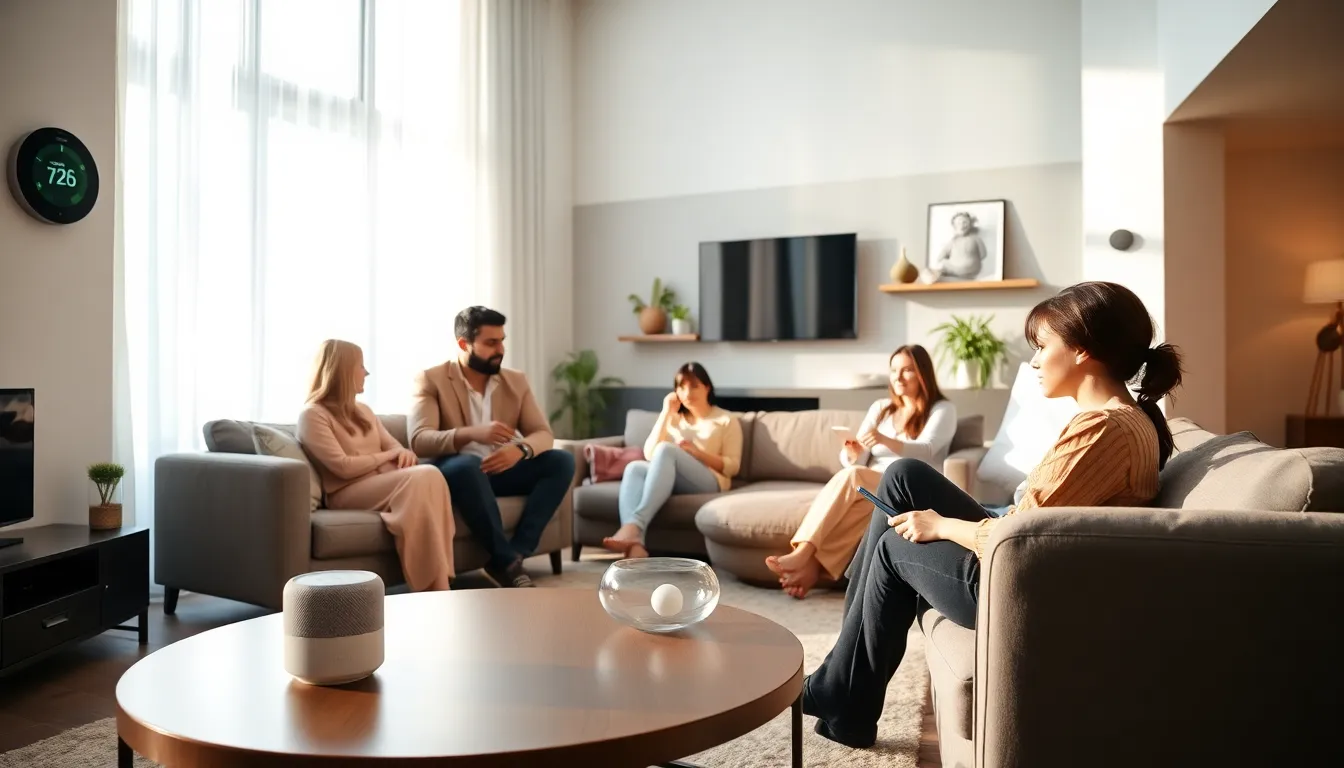Imagine walking into your home, and it instantly recognizes your presence, adjusts the lights to your favorite hue, and sets the perfect temperature. Sounds like something out of a sci-fi movie, right? Welcome to the world of custom smart homes. These technological wonders promise not just comfort but also efficiency and convenience. If you’ve ever thought about transforming your living space into a smart sanctuary, you’re in for a treat. Let’s jump into the future of living where every gadget is just a whisper away from making your life easier.
Table of Contents
ToggleUnderstanding Custom Smart Homes

Custom smart homes encompass a vast range of technologies tailored to fit individual lifestyles and preferences. They innovatively integrate various smart devices to provide homeowners with unparalleled convenience and control over their environments. From smart thermostats that learn your heating patterns to voice-activated assistants that can control nearly every aspect of your household, the beauty of custom smart homes lies in their flexibility and personalization.
They aren’t just about smart devices: they’re about smart living. Think custom-designed experiences that reflect your unique habits and needs. Whether you are a tech aficionado or someone simply looking to simplify daily tasks, understanding what custom smart homes offer can open a world of possibilities.
Benefits of Custom Smart Homes
The advantages of living in a custom smart home extend far beyond just impressive tech gadgets. Firstly, increased energy efficiency stands out as a prominent benefit. Smart homes can significantly reduce energy consumption by automatically adjusting lights, heating, and cooling based on occupancy or time of day. Imagine reducing your energy bill while sipping your favorite beverage, blissfully scrolling through smart home reviews.
Second, the enhanced security offered by custom smart homes cannot be overstated. With features like surveillance cameras, smart locks, and alarm systems, you can ensure your home is protected, even when you’re miles away. The peace of mind that comes with knowing you can monitor your home in real-time is priceless.
Finally, let’s talk about convenience. Custom smart homes streamline daily tasks, allowing homeowners to control multiple devices from a single app or voice command. Who wouldn’t want to turn off their living room lights with just a simple voice command while lounging on the couch?
Key Components of a Custom Smart Home
Creating your very own custom smart home involves several key components that together create a seamless living experience. The first aspect to consider is:
Designing Your Custom Smart Home
The initial design phase is crucial as it sets the stage for everything that follows. It’s about aligning your technological choices with your lifestyle. Think about how your family uses spaces and identify which areas could benefit most from smart technologies.
Integrating Technology and Aesthetics
Blending smart technology with aesthetics is also a critical aspect. After all, your home should reflect your personal style, right? Custom smart homes should not only be functional but also visually appealing. Fortunately, there’s a plethora of devices designed to integrate seamlessly with your decor without compromising style.
Home Automation Systems
Home automation systems serve as the backbone of any smart home. These systems manage connected devices through a central hub, allowing for smooth communication and coordination. A well-designed home automation system ensures that each device works harmoniously, providing homeowners with a fluid experience.
Choosing the Right Devices
Choosing the right devices is where the fun begins. From smart lights and locks to thermostats and speakers, the options are nearly endless. Focus on what will enhance your daily routine. Whether you prioritize security, entertainment, or energy efficiency, selecting the right devices impacts the overall smart home experience.
The Installation Process
The installation process for custom smart homes can be multifaceted, depending on the technology and systems being integrated. It typically begins with assessing your home’s infrastructure to determine the best approach. Professionals often recommend hiring experienced installers, especially for advanced systems that require complex wiring or programming.
Most installations can follow a simple step-by-step process: planning, executing, and testing each device to ensure compatibility and functionality. During this phase, it’s essential to remain flexible. If a certain configuration doesn’t play well together, adjustments may need to be made to achieve optimal results.
Once everything is in place, a thorough walkthrough with your installer can help familiarize you with your new system. It’s a great opportunity to ask questions and ensure you understand how to operate your smart home efficiently.
Cost Considerations for Custom Smart Homes
When it comes to custom smart homes, cost often plays a pivotal role in the decision-making process. The initial investment can vary widely, depending on the scope of the project. Factors such as the type of devices, the complexity of the installation, and any necessary home renovations all contribute to the overall price.
Also, it’s essential to consider the long-term savings as well. While the upfront costs might seem daunting, energy-efficient devices can lead to considerable savings over time. Many homeowners find that their smart technologies pay for themselves in lower utility bills and increased comfort.
Future Trends in Smart Home Technology
As technology continues to evolve, so do the possibilities within smart homes. The future is pointing toward increased integration of artificial intelligence (AI) and machine learning. These advancements promise to create even more personalized experiences, with homes that anticipate residents’ needs based on their patterns and preferences.
Also, the rise of Internet of Things (IoT) devices will further expand what is possible in the realm of custom smart homes. Expect to see advancements in everything from health monitoring systems that track wellness to more integrated entertainment solutions that seamlessly connect devices across different platforms. The landscape is expanding, and staying informed about trends will help homeowners make smart choices moving forward.


